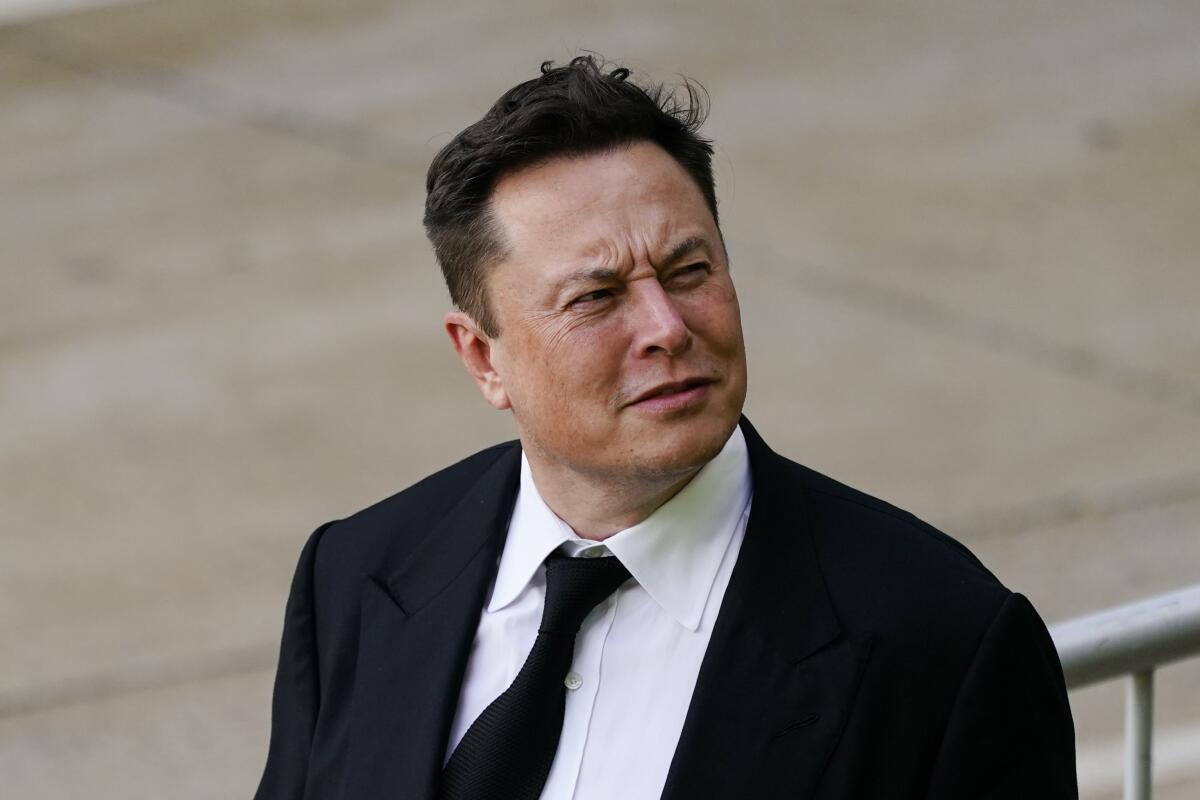The dubious history of the Santa Monica Observer, the outlet behind that false Paul Pelosi story

When Elon Musk amplified an unfounded Santa Monica Observer story about the Paul Pelosi attack over the weekend, it wasn’t the first time the dubious outlet had been in the spotlight.
Last year, a Times editorial said the Observer was “notorious for publishing false news,” including claims in 2016 that Hillary Clinton was actually dead and that a body double debated Donald Trump. Months after the Clinton claim, the news site also incorrectly reported that Trump had appointed Kanye West to a high-level position in the Interior Department. More recently, the Observer falsely reported that Bill Gates was responsible for a polio epidemic, according to the editorial.
With an official-sounding name and a professional-looking website, the Observer is one of a number of outlets masking themselves as legitimate news sources. The phenomenon has been growing and indicates how bad actors are increasingly trying to fool the public into seeing them as purveyors of accurate information.
“They also tend to be places that predictably amplify and argue for conspiracy theories that people already want to believe,” said Mike Ananny, an associate professor of communication and journalism at USC. “It’s not really about disinformation or fake news. It’s really about appearing to be legitimate, appearing to be trustworthy, appearing to be sources that have done the things that we’ve expected good journalism to do. It’s about the people making it having disingenuous aims or goals.”
The hammer attack on House Speaker Nancy Pelosi’s husband at their San Francisco home grew out of a culture that rewards stridency and provocation.
Bolstering legitimate local news coverage, which has been decimated over the years by consolidation of media groups and the difficult economics of publishing in a digital age, would help counter the propaganda, he said.
“The stronger the media system is, the stronger local news is,” Ananny said. “It’s almost an immune system for people to be able to look at something like Musk’s tweet or the Santa Monica Observer and quickly look at that and recognize it as illegitimate.”
The Observer did not respond to a request for comment. Its website says it is a free weekly print newspaper founded in 1998 that looks at “Santa Monica’s neoliberal politics with skepticism,” though the publication says it does not “adhere to any party line.” Its publisher is onetime City Council candidate David Ganezer, according to The Times’ editorial.
Perhaps more urgently, the amplification of the Observer’s story speaks to the danger of having one powerful and wealthy person control a large platform such as Twitter, Ananny said. He noted that laws currently prevent a single owner from controlling too many media outlets in an area. And Twitter’s role as an influential platform — one that journalists pay attention to — would seem to be butting up against that rule.
“Regulation needs to catch up super fast to the reality of how media power works online, how online media environs work,” Ananny said. “It’s not about whether [Musk] tweets fake news. Fake news is always there. Why is that guy having that power to both own this platform and decide idiosyncratically what he wants to appear?”
Musk hasn’t announced a plan for Twitter’s content moderation but appears to be torn between a looser forum that allows more objectionable material than previous management would tolerate, while not turning off paying advertisers. He eventually deleted the Observer tweet, but not before his followers had spread it far and wide.
More to Read
Inside the business of entertainment
The Wide Shot brings you news, analysis and insights on everything from streaming wars to production — and what it all means for the future.
You may occasionally receive promotional content from the Los Angeles Times.












